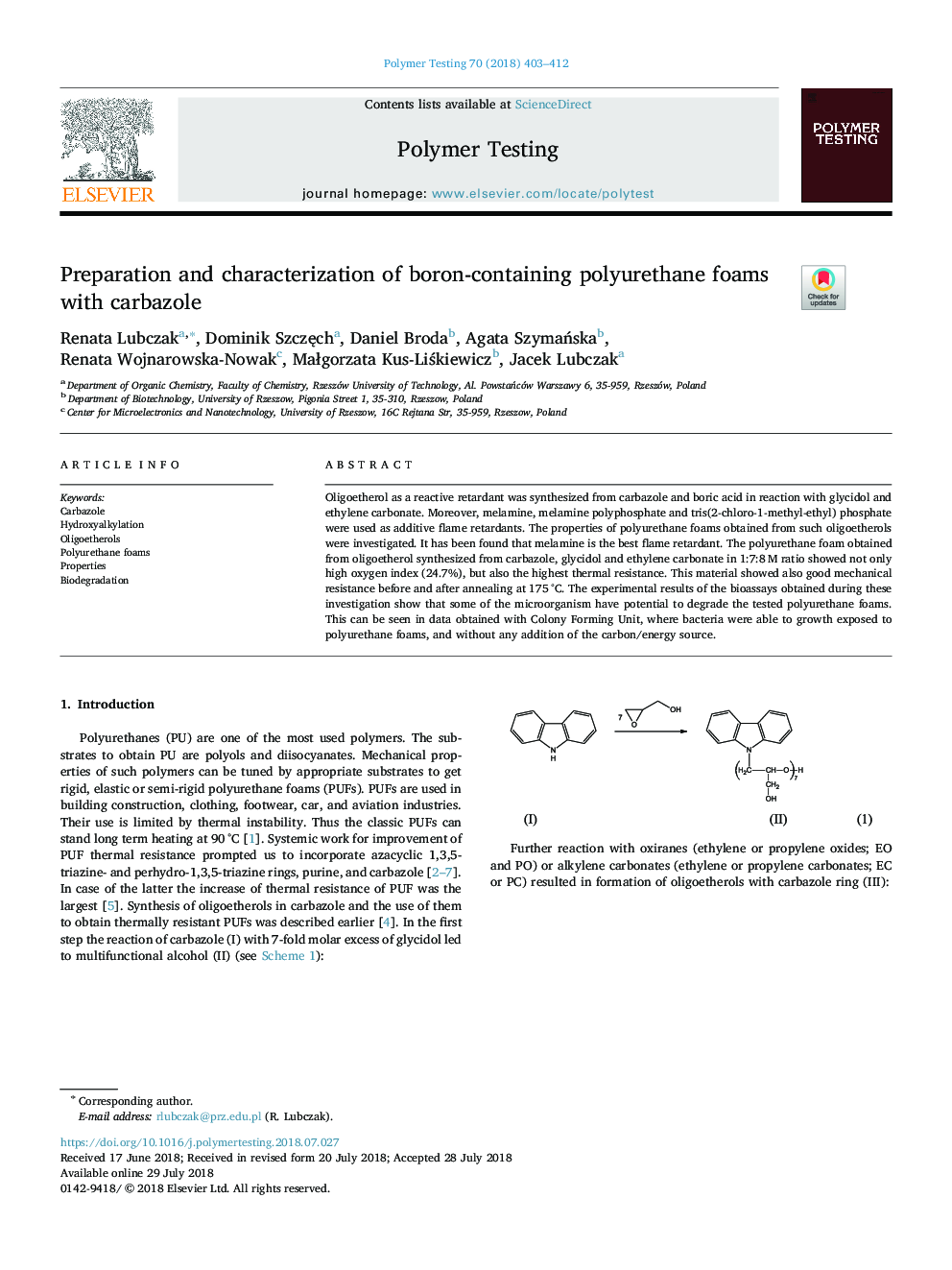| Article ID | Journal | Published Year | Pages | File Type |
|---|---|---|---|---|
| 7824506 | Polymer Testing | 2018 | 10 Pages |
Abstract
Oligoetherol as a reactive retardant was synthesized from carbazole and boric acid in reaction with glycidol and ethylene carbonate. Moreover, melamine, melamine polyphosphate and tris(2-chloro-1-methyl-ethyl) phosphate were used as additive flame retardants. The properties of polyurethane foams obtained from such oligoetherols were investigated. It has been found that melamine is the best flame retardant. The polyurethane foam obtained from oligoetherol synthesized from carbazole, glycidol and ethylene carbonate in 1:7:8â¯M ratio showed not only high oxygen index (24.7%), but also the highest thermal resistance. This material showed also good mechanical resistance before and after annealing at 175â¯Â°C. The experimental results of the bioassays obtained during these investigation show that some of the microorganism have potential to degrade the tested polyurethane foams. This can be seen in data obtained with Colony Forming Unit, where bacteria were able to growth exposed to polyurethane foams, and without any addition of the carbon/energy source.
Related Topics
Physical Sciences and Engineering
Chemistry
Organic Chemistry
Authors
Renata Lubczak, Dominik SzczÄch, Daniel Broda, Agata SzymaÅska, Renata Wojnarowska-Nowak, MaÅgorzata Kus-LiÅkiewicz, Jacek Lubczak,
